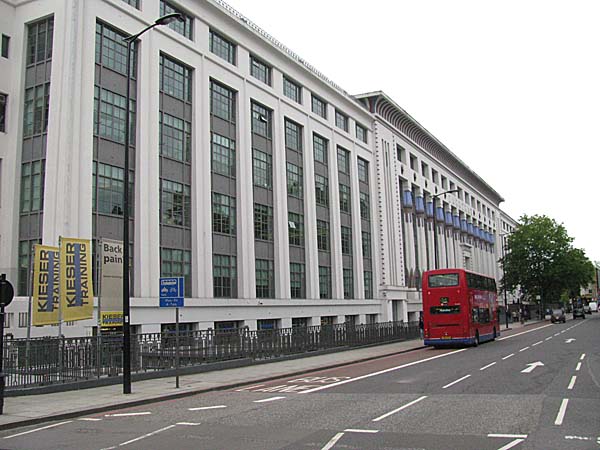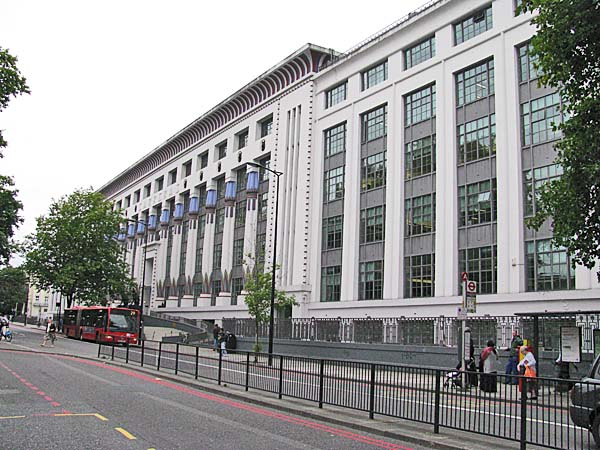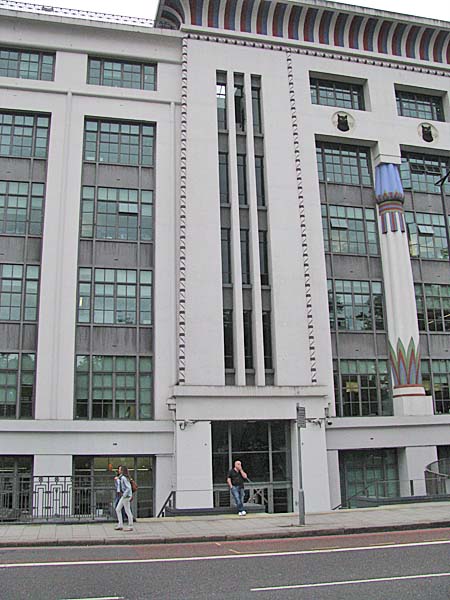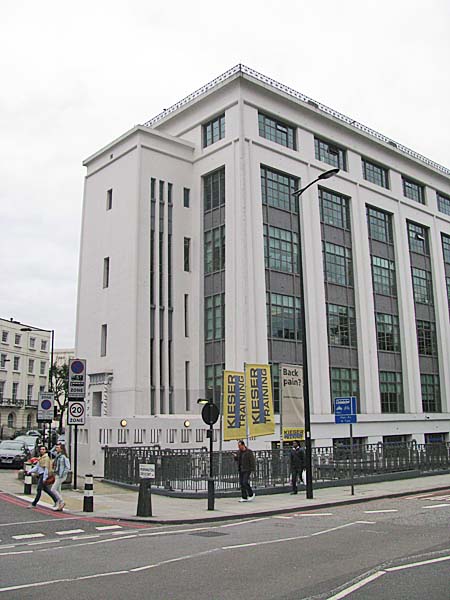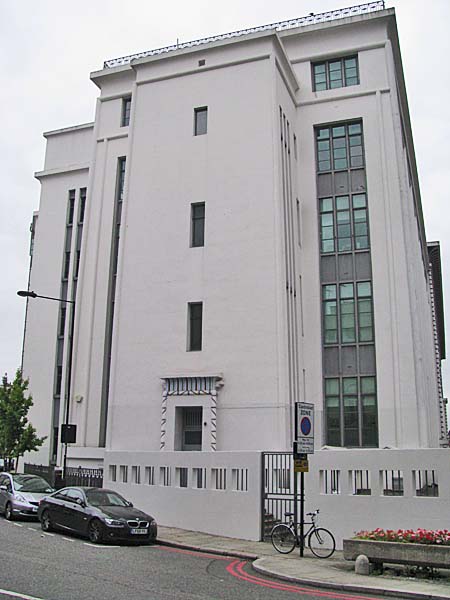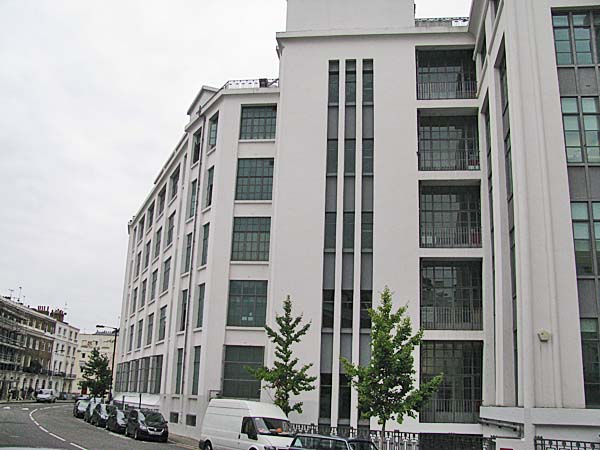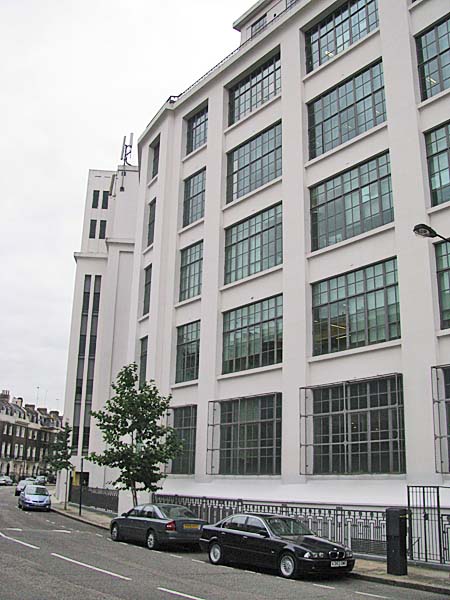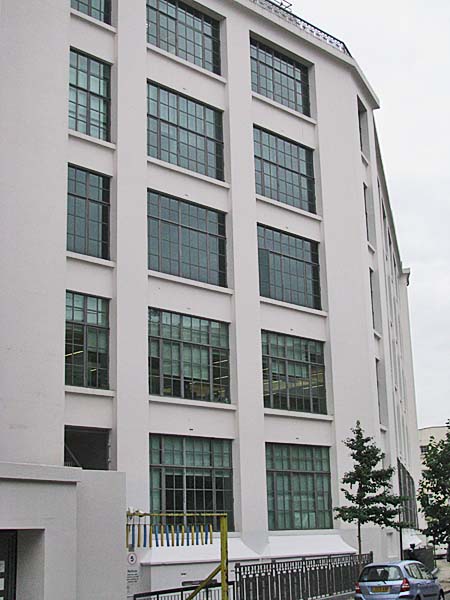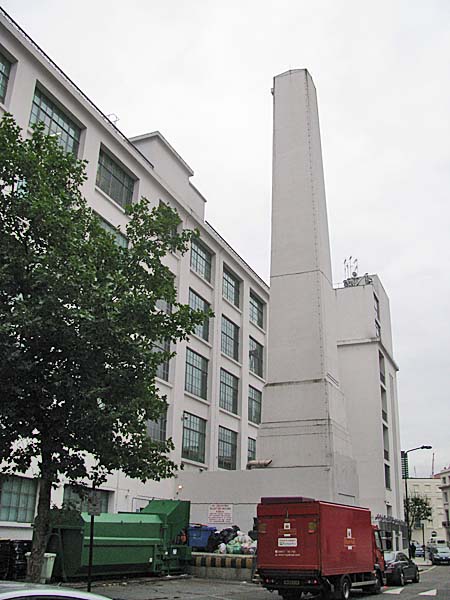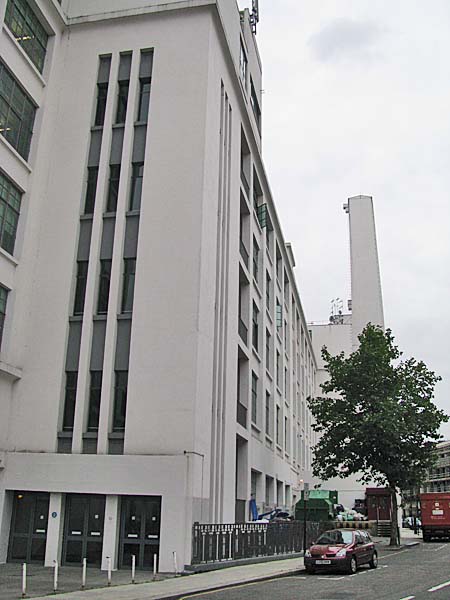The "House of Carreras" started its
tobacco business in London in the 19th
Century. It was a small business at
that time selling various tobacco products
like cigars, cigarettes and snuff, out of
shops, first near Leicester Square and
later on Regent's Street. Apparently
it was common for a local cat to curl-up
and sleep in the window of the shop near
Leicester Square and it was known
informally as "The Black Cat Shop".
The concept stuck and the black cat was
later adopted as a brand symbol.
With the advent of the cigarette making
machine, the business required a factory
and in 1907 production moved to the
Acadia Works on City Road in East
London. However, further expansion
led to the construction of this building
on Hampstead Road in Camden Town.
As you can see, the black cat theme was
prominent on the building including a row
of cat faces complete with wire whiskers.

A pair of cats, based on the Egyptian god
Bastet, sat on either side of the
entrance. The original cat
sculptures were in bronze and when the
factory closed the cats were
relocated. When the building was
refurbished in the 1990s the cats were
replaced with replicas.
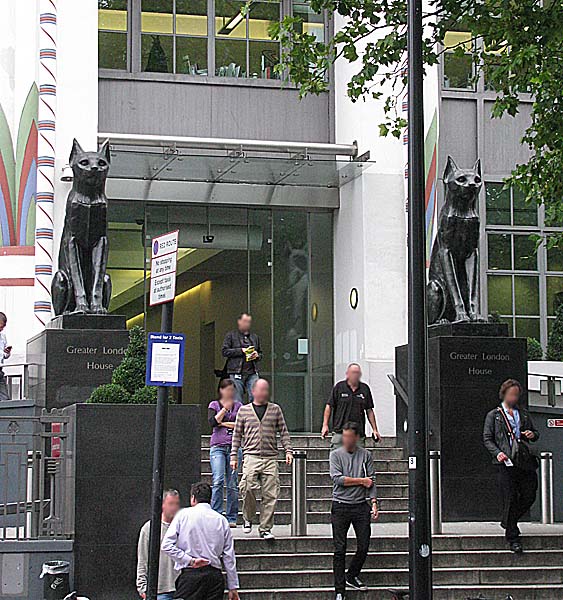
At the time the building was designed, the
World was fascinated by all things
Egyptian, following the discovery of
Tutankhamun's tomb. So it has a
number of "Egyptian features" the most
prominent being the brightly coloured
columns with capitals
that look like of a cluster of papyrus
flowers.
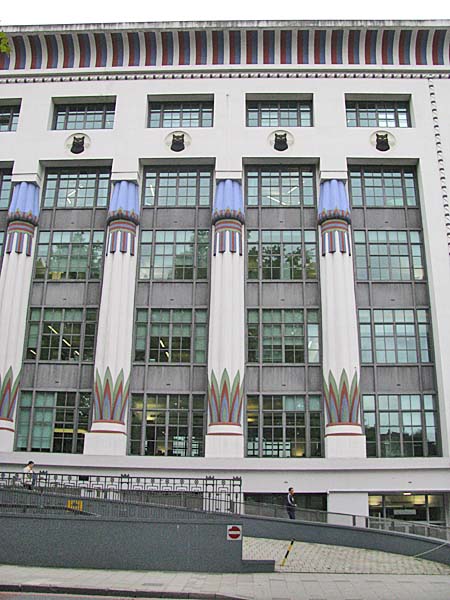
It also has a rather
attractive railing around parts of the
building with an Egyptian motif.
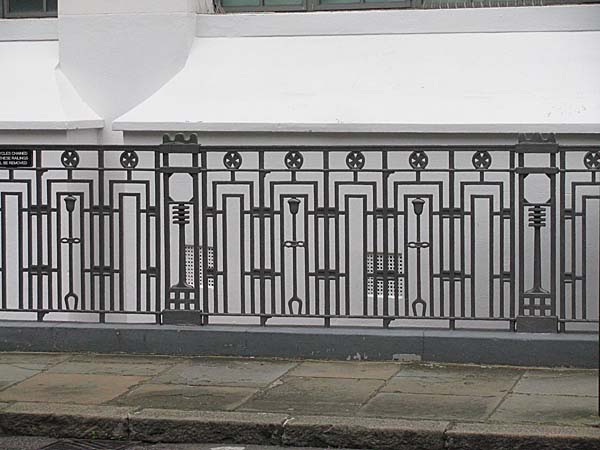
Continuing the Egyptian
theme, I gather that the opening was
marked by a procession of actors, from a
production of Aida, in constume and
chariot races on Hampstead Road.
The building may have "harked back" to an earlier time but it was in all other respects a modern structure. It was built of Atlas White Cement which the Atlas Portland Cement Company describes as follows, "...a White Non-Staining Portland Cement that could also be used for decorative purposes.....It is white in color, non-staining and a true Portland Cement. Its chemical composition is practically identical with that of our Atlas Portland Cement, except that it is free from those elements which cause the dark color in commercial Portland Cements. The strength of Atlas-White, both in tension and compression, is equal in every way to that of our other product." Inside, the building featured air conditioning and a dust extraction plant.
In 1959 Carreras merged with Rothmans and this factory closed down when production moved to Basildon. In the 1960s the building was converted into offices and many of the art-deco features were removed to make it look more contemporary. It was at this point that it became Greater London House. In the 1990s the building was acquired by new owners and they commissioned the architectural practice of Finch Forman to restore it to its former splendour. Today, it is home to a number of organizations including the British Heart Foundation.